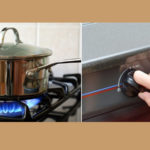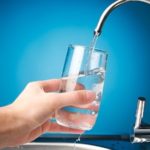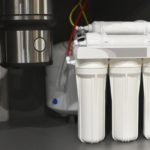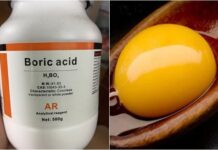What is a water purifier?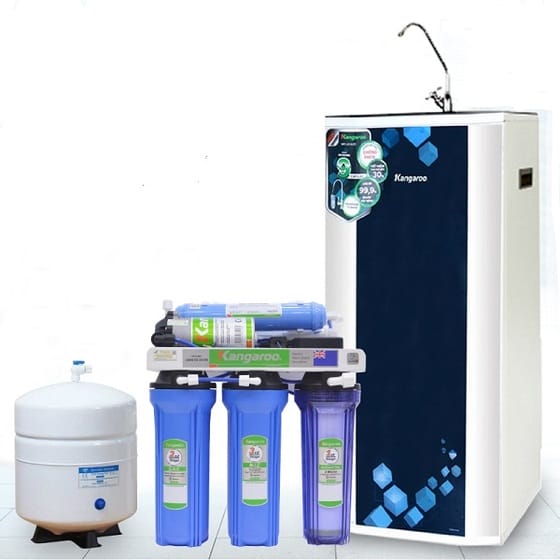
A water purifier is a device that employs modern filtration technologies to remove chemicals, metals, bacteria, germs, and other pollutants to provide clean water, meeting the household needs.
Filtered water is water that has been treated (filtered out impurities or bacteria from tap water) for drinking or other purposes such as daily use, production, etc. Filtered water can be created by traditional methods such as boiling, distilling, or manual filtration (using nets, cotton, charcoal, sand, etc. to remove impurities or sediment) and can also be produced by industrial methods through the operation of water treatment plants. In this case, the water source will be treated with chemical, physical, and microbiological technologies to create high-quality products that are safe to consume or use and have little risk of long-term or immediate harm.
In most developed countries, filtered water is provided for commercial, household, and industrial use. Filtered water is considered to be of higher quality and standards than water used for drinking or bottled drinking water or purified water (commonly used for drinking or consumption during food processing…) or a widely used form of filtered water which is tap water.
Benefits of a water purifier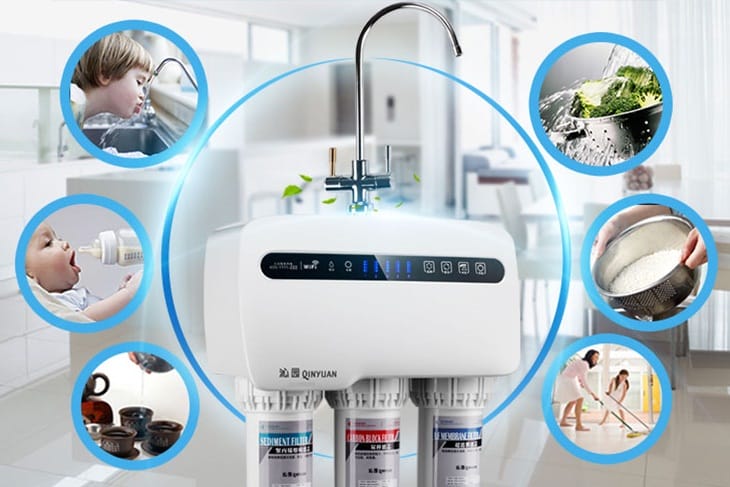
Eliminating harmful contaminants
With the effectiveness of modern water purifiers, the filtration cores help remove harmful substances such as lead, arsenic, carbon, chlorine, etc. present in contaminated water, restoring water with a pure taste and ensuring user’s health safety.
Safe for children and the elderly
Water purifiers are sealed with stainless steel housing, which is non-flammable, leak-proof, and safe for children. At the same time, advanced membrane filtration technology, along with additional mineral cores, provides good water for the immunity of children, the elderly, and the sick.
Cost savings
By using a water purifier, you will not need to spend time and fuel costs to boil water; the cost of buying bottled mineral water every day. More importantly, you can actively protect your health, prevent diseases, and save medical expenses.
Protecting the environment
It helps the surrounding environment become cleaner, avoiding pollution from non-biodegradable plastic waste.
Structure of a water purifier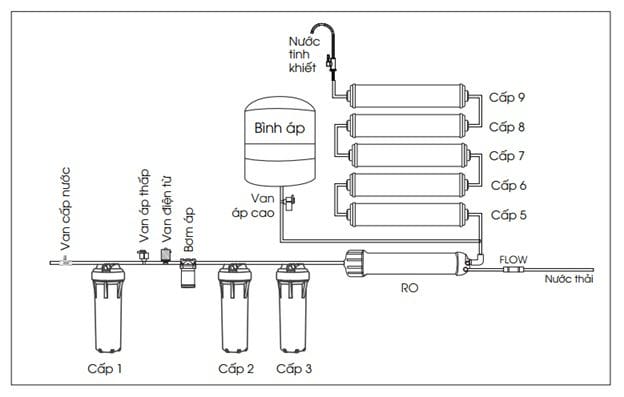
Filter cartridge No. 1, 2, 3 cleans dirt, heavy metals, rust… absorbs chlorine, pesticides, herbicides… in water.
Filter cartridge No. 4 with R.O Filmtec membrane produced in the United States has the ability to completely remove solids, gases, heavy metal ions, bacteria, making the water completely pure.
Filter cartridge No. 5 applies advanced Nano Silver antibacterial technology to remove up to 99.9% of harmful bacteria.
Filter cartridge No. 6, 7 helps balance the pH, neutralize excess acidity in water.
Filter cartridge No. 8 made from natural Maifan stone supplements essential minerals to the water.
Filter cartridge No. 9 ORP helps supplement nutrients to prevent aging, detoxify the body, enhance immunity, and prevent cancer.
A water storage tank with a capacity of about 10 liters is used to store filtered water from the RO membrane.
Operating principle and working mechanism of a water purifier
The source water is supplied to the purifier through a water splitter, it will pass through filter cartridge No. 1, which is made of coarse PP fibers with 5 Micro-sized mesh openings, which prevent dirt, rust, and only allow particles larger than 5 Micro to pass through, while retaining larger particles.
Then the water will be drawn from filter cartridge No. 1 to filter cartridge No. 2. In filter cartridge No. 2, there are activated carbon granules that function to absorb heavy metals, organic matter, detergents, pesticides, various hazardous chemicals, and contain Cation components to soften the hardness of the water to protect the R.O membrane, providing pure and naturally sweet-tasting water.
Next, the water will be drawn to filter cartridge No. 3, which is made of PP fibers with 1-micron mesh openings, which can remove sediment, rust, large impurities, heavy metals… larger than 1 micron
The water filtered through filter cartridge No. 3 will continue to be pushed to the RO membrane. The RO membrane, produced in the United States, operates on the reverse osmosis principle, withstands high pressure, and has ultra-small openings (0.0001 Micron) which can remove all solids, dissolved gases in water, metal ions, heavy metals, microorganisms, bacteria, organic matter, making the water completely pure without changing its physical and chemical properties. At this stage, water is separated into pure water that will pass through the RO membrane while the remaining water will be discharged through the drain valve. Therefore, it is considered the most important component of the entire system. Finally, the water will be led to the Carbon CL_T33 filter cartridge. In this filter cartridge, Carbon components have the effect of disinfection, color absorption, softening, and balancing the pH of water to make it even purer.
What are the water filtration technologies in a water purifier?
RO water filtration technology 
A RO water purifier (REVERSE OSMOSIS) is a device that uses modern RO filtration technology to remove all impurities such as sediment, pesticides… harmful bacteria from the body.
At the same time, this water purifier also helps the body supplement beneficial minerals and provides you with clean and safe water.
RO technology is a water filtration technology that uses a membrane filter with filtration openings measuring 0.0001 micrometers. Apart from filtering solids, heavy metal ions, it can also filter microorganisms, bacteria with ultra-small sizes, providing you with instantly drinkable pure water without the need to boil it again.
UF water filtration technology
UF water filtration technology (Ultra Filtration) is also known as a ultrafiltration membrane. This technology filters water using a membrane filter with filtration openings ranging from 0.1 to 0.5 micrometers, to remove large molecules, viruses, and bacteria from the water source to protect the health of users.
Nano water filtration technology
Nano water filtration technology consists of a membrane with ultra-small filtration openings measuring from 0.01 to 0.1 micrometers to completely remove impurities, dust, harmful bacteria, and viruses. At the same time, it retains most of the natural minerals in water, which is extremely beneficial to the body.
Conclusion
7 Essential Summer Household Items to Have
As the sweltering summer days begin, it’s important to stay prepared to provide the best care and comfort for yourself and your family. To help, we’ve rounded up the essential products you need to beat the heat and keep everyone feeling their best. Check out our list of the top 7 must-have items to stay safe and cool down in those hot months.
How Often Should Water Filters be Replaced?
Everyone knows that water filters need to be replaced regularly to ensure the quality of drinking water, but many people don’t know how often they should replace a water filter.



























